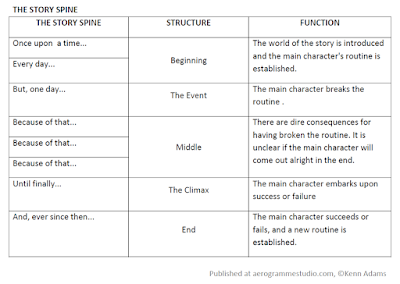All businesses face fierce
competition and must differentiate themselves to succeed. One powerful tool for
achieving this is the Unique Selling Proposition (USP). A well-crafted USP
defines what makes your business unique, valuable, and desirable in the eyes of
your customers.
What is a Unique Selling Proposition (USP)?
A Unique Selling Proposition (USP) is a clear and concise
statement that communicates the unique benefits and advantages of your product
or service compared to competitors. It answers the fundamental question:
"Why should customers choose your business over others?" Your USP
should not only capture your business's distinctiveness but also resonate with
your target audience, leaving a lasting impression.
Steps to Develop Your USP:
1. Understand Your Target Audience:
- Identify your ideal customers and their pain points.
- Research their preferences, needs, and aspirations.
2. Analyze Your Competitors:
- Assess your competitors' strengths and weaknesses.
- Discover what sets you apart from the competition.
3. Identify Your Unique Features:
- Determine what aspects of your product or service are
exceptional.
- Consider factors such as quality, price, innovation, or
convenience.
4. Define Your Value Proposition:
Pinpoint the specific benefits your business offers.
Focus on how these benefits meet your customers' needs and
desires.
5. Craft a Concise Statement:
- Develop a short and memorable statement (usually a single
sentence).
- Emphasize what makes your business unique, addressing a
customer pain point.
6. Emphasize Benefits, Not Just Features:
- Your USP should highlight how your product or service
improves customers' lives.
- Clearly communicate the value customers gain from choosing
you.
7. Test and Refine:
- Share your USP with a small group of potential customers for
feedback.
- Refine it based on their insights and reactions.
8. Integrate Your USP into Branding:
- Ensure your USP aligns with your brand's mission and values.
- Incorporate it into your marketing materials, website, and
advertising campaigns.
9. Communicate Consistently:
-
Your USP should be present in all customer-facing
communications.
- Maintain a consistent message across all platforms.
10. Monitor and Adapt:
- Continuously assess the effectiveness of your USP.
- Be prepared to adapt it as your business evolves and
customer preferences change.
Examples of Successful USPs:
Apple: "Think Different"
USP: Innovation and creativity in
consumer electronics.
Domino's Pizza: "You Get Fresh, Hot Pizza Delivered to
Your Door in 30 Minutes or Less or It's Free!"
USP: Speedy pizza delivery.
Volvo: "For Life"
USP: Unmatched safety and longevity
in every vehicle.
M&M's: "Melts in Your Mouth, Not in Your
Hands"
USP: A chocolate that doesn't make
a mess.
FedEx: "When it absolutely, positively has to be there
overnight."
USP: Reliable and fast package
delivery.
BMW: "The Ultimate Driving Machine"
USP: Exceptional driving experience
and performance.
Geico: "15 Minutes Could Save You 15% or More on Car
Insurance"
USP: Quick and cost-effective
insurance quotes.
Head & Shoulders: "You Get Rid of Dandruff"
USP: Effective dandruff control.
Bounty: "The Quicker Picker Upper"
USP: Fast and efficient paper towel
absorption.
Subway: "Eat Fresh"
USP: Fresh and customizable
sandwich options.
Walmart: "Save Money. Live Better."
USP: Affordable prices for a better
life.
Nike: "Just Do It"
USP: Empowering athletes and
promoting a can-do attitude.
Amazon: "Earth's Most Customer-Centric Company"
USP: A vast online marketplace with
an emphasis on customer satisfaction.
A compelling Unique Selling Proposition (USP) is a crucial
component of your business's success. It sets you apart from competitors,
captures the essence of your value proposition, and resonates with your target
audience helping them recognize your
unique worth in the market. Your USP is your competitive edge, so make it
count.
PS “To find a unique position, you must ignore conventional
logic. Conventional logic says you find your concept inside yourself or inside
the product. Not true. What you must do is look inside the prospect’s mind.” - Al Ries and Jack Trout







